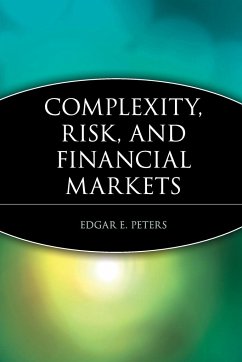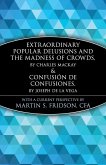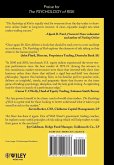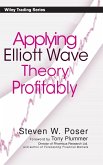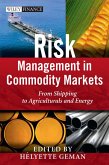Die Komplexitätstheorie besagt, daß Prozesse mit einer großen Anzahl scheinbar unabhängiger Faktoren, wie z. B. freie Märkte, sich spontan zu einem kohärenten System zusammenschließen können. Auf der Grundlage wissenschaftstheoretischer und wirtschaftswissenschaftlicher Aspekte demonstriert der Autor, wie sich das Zufallsprinzip und die Ungewißheit der Komplexitätstheorie auf die Finanzmärkte anwenden lassen. Verständlich und spannend geschrieben, bietet dieses Buch einen grundlegenden Einblick, wie freie Märkte funktionieren, indem sie ständig neue komplexe Systeme schaffen. Peters untermauert seine Aussagen mit einer Fülle von praktischen Beispielen. "A fascinating account of one of today's great paradoxes: The irreducible uncertainty that lies at the heartof social and economic order. A perfectly efficient market could not possibly work. Uncertainty reduces risk. Ed Peters takes our most cherished beliefs, tuns them upside down, and convinces us that they're much better that way."--Ian Stewart, author of Does God Play Dice and columnist for Scientific American
A groundbreaking look at complexity theory and its implications in the world of finance
Complexity theory tells us that processes with a large number of seemingly independent agents-such as free markets-can spontaneously organize themselves into a coherent system. In this fascinating book, Edgar Peters brings together scientific theory, the artistic process, and economics to show how the randomness and uncertainty of complexity theory can be applied to financial markets. Written in an engaging and accessible style, this is a thoughtful, conceptual look at the way free markets are, by their nature, continually evolving complex systems. Expanding on previous explorations of chaos theory, Peters draws on real-life examples ranging from the Asian crisis to America's love of conspiracy to show that complexity and randomness are necessary for the free markets to operate in a competitive manner.
A groundbreaking look at complexity theory and its implications in the world of finance
Complexity theory tells us that processes with a large number of seemingly independent agents-such as free markets-can spontaneously organize themselves into a coherent system. In this fascinating book, Edgar Peters brings together scientific theory, the artistic process, and economics to show how the randomness and uncertainty of complexity theory can be applied to financial markets. Written in an engaging and accessible style, this is a thoughtful, conceptual look at the way free markets are, by their nature, continually evolving complex systems. Expanding on previous explorations of chaos theory, Peters draws on real-life examples ranging from the Asian crisis to America's love of conspiracy to show that complexity and randomness are necessary for the free markets to operate in a competitive manner.
Peters combines a chaos/complex systems framework with the Austrian school of economic thought to explain our lack of market understanding. He develops a strong case that the most pressing problem for investors is not a matter of specific models but of determining how to assess risk in a complex and uncertain world. Peters draws important distinctions between risk, uncertainty, ignorance, vagueness, and ambiguity, and in doing so, shows how the subtle meanings of words can provide immense value in explaining the market environment. He also resurrects the Austrian school s emphasis on subjectivism and makes it come alive within finance. (Financial Analyst s Journal)
"Edgar E. Peters's latest book, Patterns in the Dark: Understanding Risk and Financial Crisis with Complexity Theory is not merely an autobiographical indulgence. The bulk of the book is Peters's lucent analysis expounding on the need for uncertainty. Whether he uses the example of genetic algorithms to show how randomness can lead a process to a goal even when the ultimate path is unknown, or if he simply shows how David Bowie's creation of Ziggie Stardust illustrates the integration of two seemingly contrary elements in the creative process (with a nod toward uncertainty as a requirement for stability), Peters's always seems to provide compelling insight into how global structure and local randomness interact.
Ultimately, the book's implications for "global structure" policymakers are more clear than any prescriptions that might be handed down to individual investors acting in an environment of local randomness. However, the discussions regarding various process models and their implications for economic activity are worth the price of admission alone. Interested investors ought to check it out."--("Fool On The Hill - An Investment Opinion" by Alex Schay - June 1999)
Ultimately, the book's implications for "global structure" policymakers are more clear than any prescriptions that might be handed down to individual investors acting in an environment of local randomness. However, the discussions regarding various process models and their implications for economic activity are worth the price of admission alone. Interested investors ought to check it out."--("Fool On The Hill - An Investment Opinion" by Alex Schay - June 1999)

